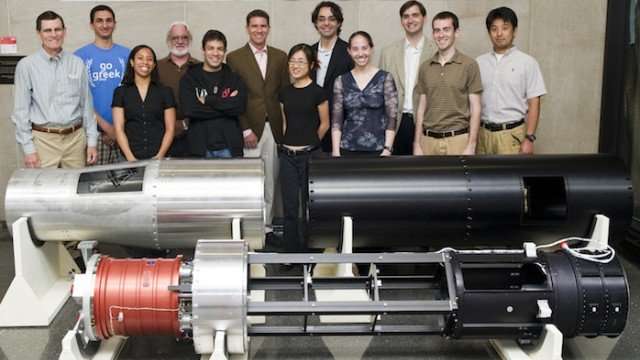Northwestern rocket to launch July 22 to explore 'star stuff'

As astronomer Carl Sagan famously said, "We are made of star stuff." So to better understand ourselves, we must look out into the galaxy.
This month, a Northwestern University research team will do just that. A 10-year, NASA-funded project will culminate on Sunday, July 22, with the launch of the "Micro-X" rocket from White Sands Missile Range in southern New Mexico. Led by physicist Enectali Figueroa-Feliciano, the team is already at the military testing area to prepare for the launch.
Figueroa-Feliciano is an associate professor of physics and astronomy in the Weinberg College of Arts and Sciences and an associate member of Northwestern's Center for Interdisciplinary Exploration and Research in Astrophysics (CIERA).
Short for "high-resolution microcalorimeter X-ray imaging rocket," the Micro-X rocket will carry a superconductor-based X-ray imaging spectrometer that will capture unprecedentedly high-resolution images of various astronomical objects. This is the first time this type of instrument will be used in space. For the upcoming flight, it will specifically observe the supernova remnant Cassiopeia A, a star in the Cassiopeia constellation that exploded approximately 11,000 light-years away from Earth. Researchers are aiming to collect detailed information about the elements ejected from the explosion in order to better understand conditions closer to home.
"We want to see how 'star stuff' is made because it is what allows life to exist," Figueroa-Feliciano said. "We also want to understand how this 'star stuff' is spread from the explosion to seed the galaxy with the elements needed to make rocky planets like Earth."
The six-story-tall rocket will spend 15 minutes in lower space before landing 50 miles from the initial launch site. Although the observation time will be short, the spectrometer's X-rays cannot penetrate the Earth's atmosphere, so the instrument must be sent into space to observe the universe. The team previously tested the rocket at NASA's Wallops Flight Facility in Virginia.
"This instrument is the future of X-ray astronomy," Figueroa-Feliciano said. "But constructing it has been a difficult endeavor. Once it launches, it needs to be a completely hands-off process; it has to turn on, record data, store data and send data back to us autonomously."
Provided by Northwestern University





















